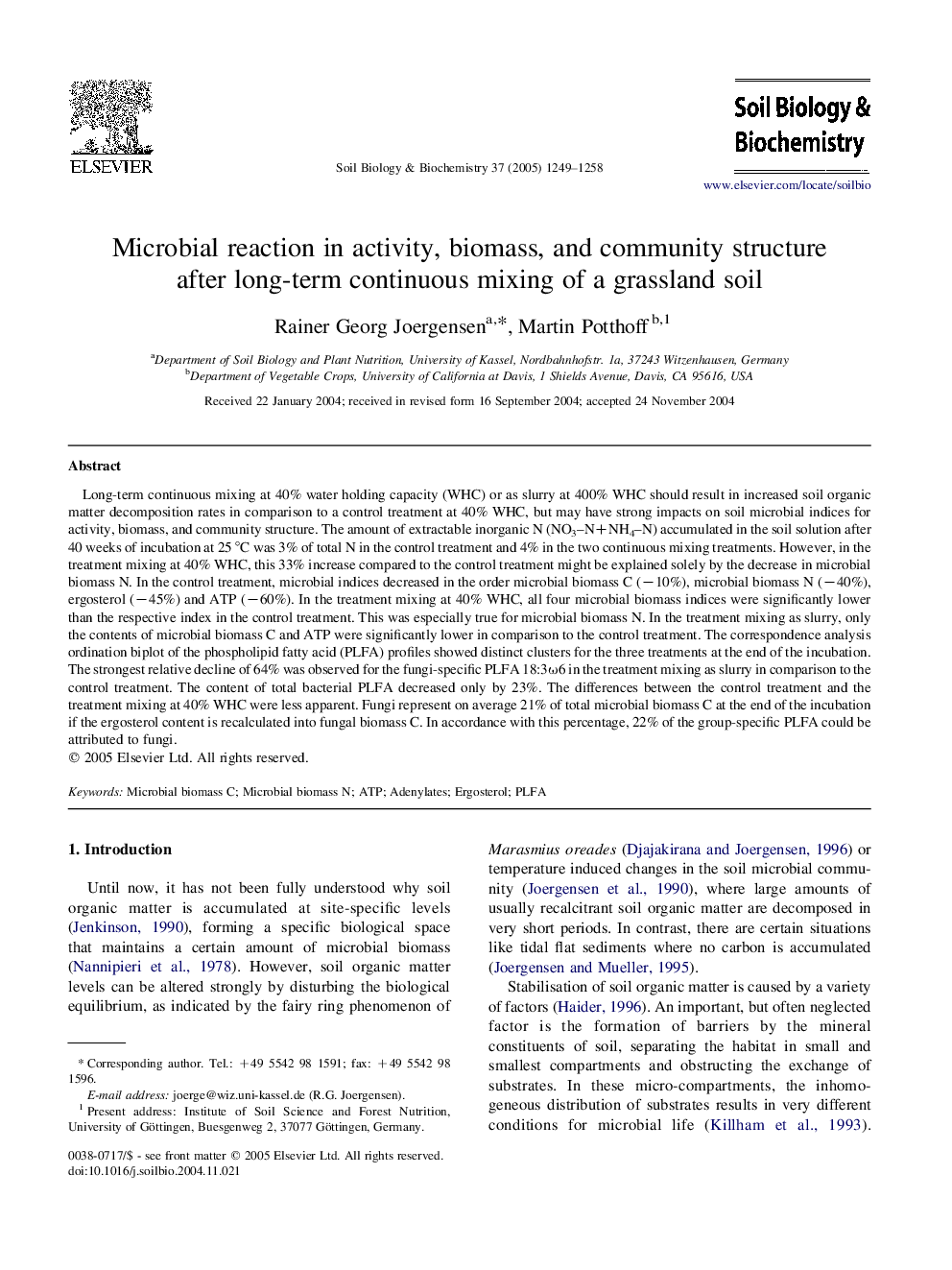| کد مقاله | کد نشریه | سال انتشار | مقاله انگلیسی | نسخه تمام متن |
|---|---|---|---|---|
| 10846146 | 1070038 | 2005 | 10 صفحه PDF | دانلود رایگان |
عنوان انگلیسی مقاله ISI
Microbial reaction in activity, biomass, and community structure after long-term continuous mixing of a grassland soil
دانلود مقاله + سفارش ترجمه
دانلود مقاله ISI انگلیسی
رایگان برای ایرانیان
کلمات کلیدی
موضوعات مرتبط
علوم زیستی و بیوفناوری
علوم کشاورزی و بیولوژیک
دانش خاک شناسی
پیش نمایش صفحه اول مقاله

چکیده انگلیسی
Long-term continuous mixing at 40% water holding capacity (WHC) or as slurry at 400% WHC should result in increased soil organic matter decomposition rates in comparison to a control treatment at 40% WHC, but may have strong impacts on soil microbial indices for activity, biomass, and community structure. The amount of extractable inorganic N (NO3-N+NH4-N) accumulated in the soil solution after 40 weeks of incubation at 25 °C was 3% of total N in the control treatment and 4% in the two continuous mixing treatments. However, in the treatment mixing at 40% WHC, this 33% increase compared to the control treatment might be explained solely by the decrease in microbial biomass N. In the control treatment, microbial indices decreased in the order microbial biomass C (â10%), microbial biomass N (â40%), ergosterol (â45%) and ATP (â60%). In the treatment mixing at 40% WHC, all four microbial biomass indices were significantly lower than the respective index in the control treatment. This was especially true for microbial biomass N. In the treatment mixing as slurry, only the contents of microbial biomass C and ATP were significantly lower in comparison to the control treatment. The correspondence analysis ordination biplot of the phospholipid fatty acid (PLFA) profiles showed distinct clusters for the three treatments at the end of the incubation. The strongest relative decline of 64% was observed for the fungi-specific PLFA 18:3Ï6 in the treatment mixing as slurry in comparison to the control treatment. The content of total bacterial PLFA decreased only by 23%. The differences between the control treatment and the treatment mixing at 40% WHC were less apparent. Fungi represent on average 21% of total microbial biomass C at the end of the incubation if the ergosterol content is recalculated into fungal biomass C. In accordance with this percentage, 22% of the group-specific PLFA could be attributed to fungi.
ناشر
Database: Elsevier - ScienceDirect (ساینس دایرکت)
Journal: Soil Biology and Biochemistry - Volume 37, Issue 7, July 2005, Pages 1249-1258
Journal: Soil Biology and Biochemistry - Volume 37, Issue 7, July 2005, Pages 1249-1258
نویسندگان
Rainer Georg Joergensen, Martin Potthoff,